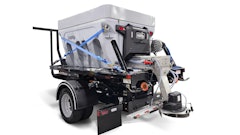Having grown up on a farm in rural Wisconsin, I have to admit I have a soft spot when it comes to use of agricultural products as an alternative fuel source. Any opportunity that can put a few more dollars into farmers' pockets, while reducing our dependency on foreign oil sources, has always seemed a positive step to me.
There are advantages to utilizing alternative fuels such as ethanol or biodiesel. Not only do they derive from a renewable resource, they are largely eco-friendly. Yet, as with most "alternatives", there are disadvantages, as well.
Perhaps the biggest deterrent to broader use of vegetable-based fuels is price. Because of the small number of refining facilities and higher refining costs, the price per gallon has trended higher than traditional gasoline or diesel. There has also been a lack of fueling sites in many parts of the country.
However, as petroleum-based fuel costs continue to rise, and the future availability of foreign oil is called into question, alternative fuels are becoming increasingly attractive. The gap in price between these fuels and petroleum-based products has narrowed, and is likely to shrink further in the foreseeable future. For example, EPA requirements for increasingly lower sulfur content in petroleum diesel — with its subsequent increase in refining costs — could eventually make the price difference with vegetable-based products such as biodiesel relatively marginal.
Biodiesel has already made inroads in municipal fleet, agricultural and marine applications. According to the National Biodiesel Board (NBB), 25 million gal. of biodiesel were produced and sold in 2003. Though a drop in the bucket compared to total U.S. fuel consumption, it represents a 5,000% increase over the 500,000 gal. produced in 1999.
Acceptance of alternative fuels like biodiesel is not without obstacles. Because it is a vegetable-based product, biodiesel requires special handling to prevent mold growth when it's hot and thickening when it's cold. And while it is nearly free of sulfur and carcinogens, it has been shown to increase nitrogen oxide (NOx) emissions, the leading contributor to ozone.
Warranty issues are also a concern, with some manufacturers openly opposed to alternative fuel use in their equipment. However, this is starting to change. Last year, John Deere began shipping its ag equipment filled at the factory with a 2% biodiesel blend. And in June, Case became the first construction equipment manufacturer to approve the use of B5 (5%) blends in all of its mechanical engines. (See www.ForConstructionPros.com for the full news report).
Availability is also improving. More refining capability has come on line, and increasing numbers of fuel outlets are cropping up around the country. (A list of retail locations can be found at www.biodiesel.org.)
Clearly, biodiesel is not right for all applications. However, it is emerging as a lead candidate in the search for a plausible renewable fuel source. Some cities and states have even gone as far as mandating biodiesel blends for specific uses.
Whether you're ready to jump on the biodiesel bandwagon or not, it's important to be aware of its potential impact on your fleet. Biodiesel's time appears to be coming, and it may be sooner than you think.
















